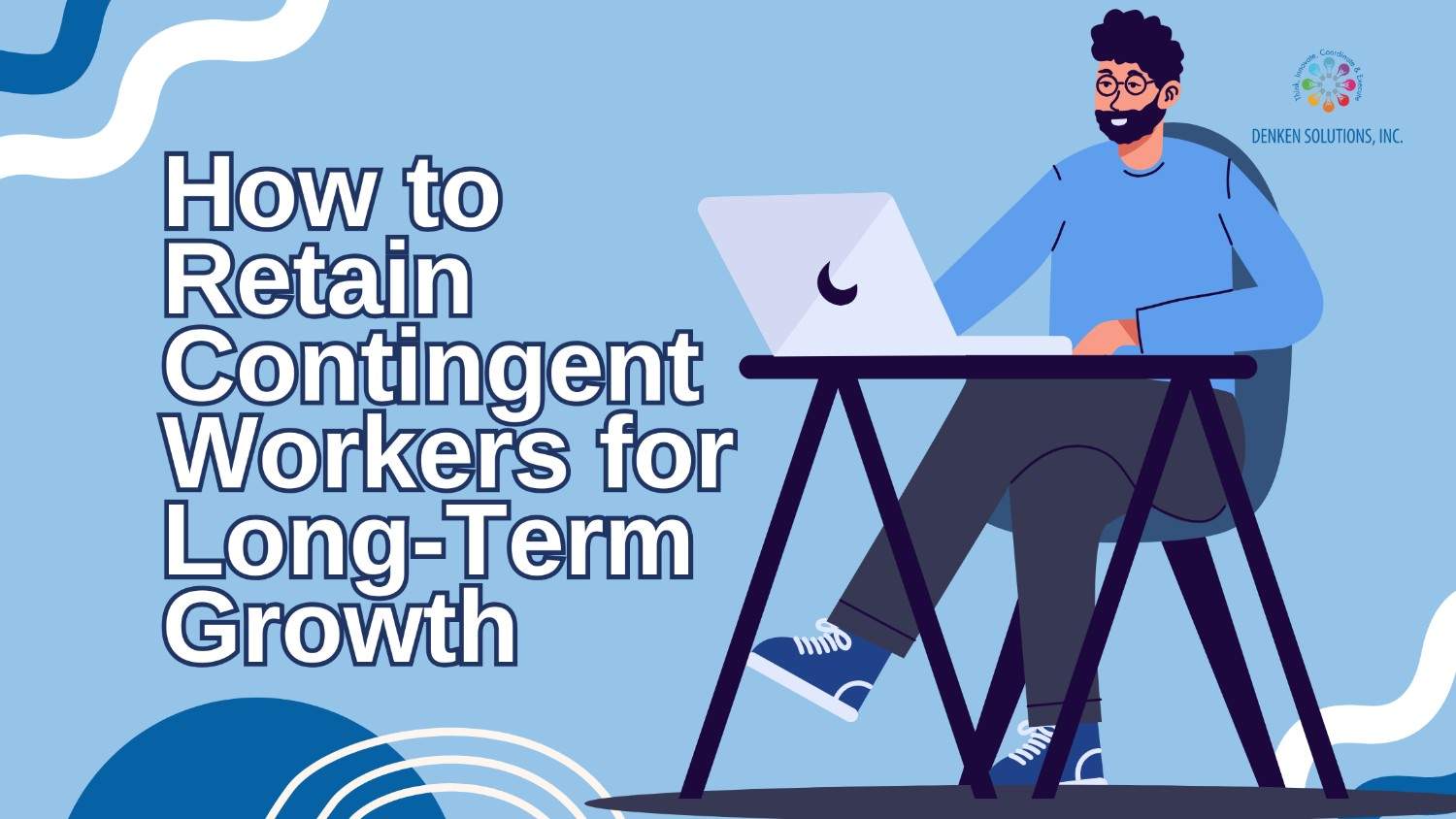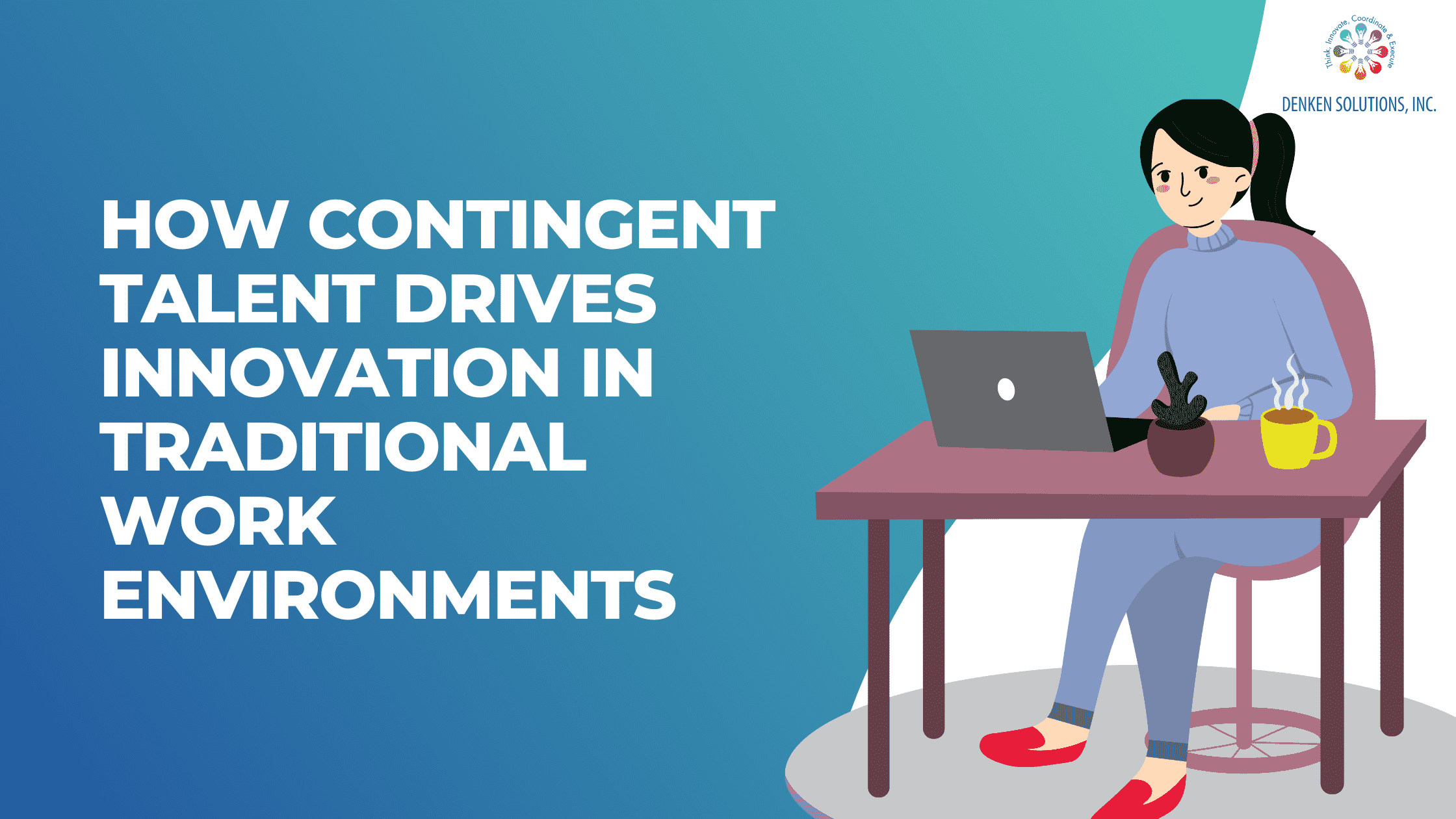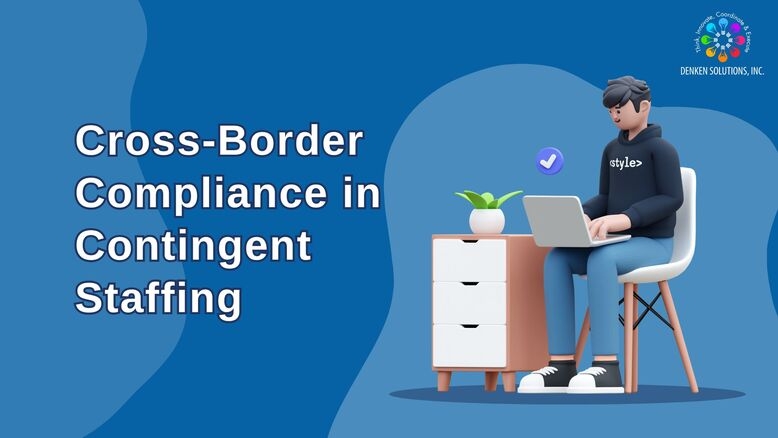In the ever-changing business landscape, contingent workers are becoming an important part of the workforce. This includes freelancers, temporary staff, and contractors. With their flexibility and expertise, they contribute to the business by scaling quickly, tackling specialized tasks, and bringing fresh perspectives to projects. However, while hiring contingent workers can offer immediate solutions and retaining them for future roles can get quite challenging.
Contingent talent will come with short-term commitments, which means that they are constantly evaluating their next opportunity. Businesses need to do more than just provide competitive pay to retain these talented employees and encourage them to return for future positions. It’s about establishing a rapport, giving them fulfilling work, and fostering an atmosphere where they feel valued and aligned with the company’s goals.
In this blog, we have explored effective strategies to retain contingent workforce jobs, which range from offering flexibility and professional development to creating a sense of belonging. By understanding what is motivating these workers and providing the appropriate incentives, companies could convert short-term engagement into a long-term partnership, thus ensuring that they have access to top talent whenever they require it.
How to motivate a contingent worker?
Motivating contingent workers is important to maintain a high-performing and engaging workforce that will also be available for future projects. Even though contingent workers do not have similar long-term commitments as full-time employees, there are various strategies that could effectively motivate them and keep them invested in a business. Some ways to motivate contingent workers are:
1. Offer competitive benefits and compensation:
Ensure that the hourly or project-based rate is as per the market rate in the industry. Pay is usually the primary factor for contingent workers; therefore, offering attractive rates or bonuses for high performance could make them feel valued. You should offer bonuses or incentives on par with the project’s success or deadlines. These rewards could push workers to go beyond and above.
2. Provide engaging work:
Contingent workers will seek out opportunities that allow them to apply their skills and expand their knowledge. Provide them with interesting and challenging projects that will keep them engaged and motivated to continue to work with you. Offering growth opportunities, like access to training programs, workforce loyalty strategies, or workshops, could be a strong motivator. Contingent workers will feel like they are learning and developing their careers will mostly help them stay committed to the company.
3. Create a sense of belonging:
While contingent workers are not full-time employees, they still want to feel like a part of the team. Involving them in team meetings, brainstorming sessions, and decision-making processes when it’s possible. This inclusivity will make them feel like their contributions are being valued. You should acknowledge their hard work and successes. Whether it is a shout-out in team meetings, a positive meeting, or a thank-you note, identifying the efforts of contingent workers can greatly boost their morale.
4. Provide flexibility:
One of the primary reasons various workers choose to be contingent workers is the flexibility it offers. respecting their time and allowing them to set their schedules, work remotely, or let them adjust their hours as needed. A flexible work environment could make contingent workers loyal and motivate them to work with you. Give them the freedom to take ownership of the tasks and make decisions within their scope of work.
5. Maintain clear communication:
Be clear about the goals of the project, timelines, and expectations from the very start. Miscommunication could lead to frustration and a lack of motivation. Keep open communication to ensure that there are no misunderstandings along the process. Regularly provide feedback on the work. Positive feedback will reinforce good performance, while constructive criticism will help in improving areas of weakness. This will show that you care about their growth and success.
6. Build a long-term relationship:
If contingent workers are made aware that there are opportunities for future work, they will most likely choose to stay engaged and motivated. Make sure they are aware of upcoming tasks or projects and express your interest in continuing to work with them long-term. Take the time to build personal relationships with the contingent workers on your team. Take an interest in the goals and aspirations, and also show genuine appreciation for the contributions.
Role of technology in retaining contingent workers:
Technology plays a major role in helping contingent workers’ retention by streamlining the workforce, enhancing communication, improving performance tracking, and providing flexibility. As the contingent worker will continue to grow, leveraging the correct technological tools could not only make it easier to manage these workers but also improve the engagement, job satisfaction, and loyalty. Here is how technology will help businesses retain top contingent talent:
1. Facilitate seamless communication:
Platforms like Slack, Microsoft Teams, or Zoom will enable real-time communication with contingent workers while also making it easy to provide feedback, maintain strong work relationships, and resolve issues regardless of the differences in time zones. With technology, businesses could set clear expectations from the start and provide consistent, actionable feedback. Additionally, project management tools like Asana, Trello, and Basecamp will allow for transparency and collaboration, thus ensuring that contingent workers will understand the tasks and deadlines. Scheduling virtual meetings and one-on-one video calls will allow managers to maintain personal contact with the contingent workers, thus helping them feel connected and valued.
2. Streamlining onboarding and integration:
Tools such as BambooHR and WorkBright will simplify the onboarding process, which allows contingent workers companies to complete paperwork, reach out to training materials, and get up to speed on company policies quickly and efficiently, even before they begin the job. Online resources like LMS or shared cloud drives will allow contingent workers to access necessary documentation, training materials, and project guidelines globally. This will reduce the onboarding time and will improve engagement.
3. Performance tracking:
Tools like Lattice and 15Five will allow managers to track the performance of contingent workers, set goals, and assess the output against key performance indicators. This will encourage quick feedback and ensure that contingent workers will feel recognized for their contributions. Technology will help businesses create formal systems for recognizing and rewarding top-performing contingent workers.
4. Provide professional development opportunities:
Platforms like LinkedIn Learning, Udemy, and Coursera tend to offer access to courses that could help contingent workers in upskilling and developing professionally. Offering access to these platforms could be a strong motivator that helps workers feel more engaged and invested in their work. Virtual mentorship programs or access to professional networks through platforms such as Slack communities or LinkedIn groups could provide contingent workers with opportunities for learning and growth.
Overcoming common challenges in retaining contingent workers:
Contingent staffing will offer businesses flexibility and access to special talent without any long-term commitment to full-time employees. However, retaining these workers could accompany unique challenges, especially because they lack the stability and long-term incentives that full-time employees will enjoy. Here are some of the most common challenges businesses face in retaining contingent workers and strategies to overcome them:
1. High turnover rates:
Contingent workers are in high demand, and many contingent workers are juggling multiple projects. This could lead to high turnover rates as workers will leave for better-paying or more appealing opportunities or simply due to the temporary nature of the role. Make contingent workers aware of the potential future opportunities. If they know they could expect more work in the future, they would be more likely to stay loyal.
2. Lack of career growth opportunities:
Unlike full-time employees, contingent workers lack access to career advancement or professional development opportunities within the company. This could lead to disengagement or a lack of motivation to return for future roles. Provide learning opportunities for contingent workers. Enable access to online courses, workshops, and webinars, as this will keep them engaged and enhance their skills, which will benefit both the business and the worker.
3. Lack of integration within the company culture:
Contingent workers are usually viewed as temporary outsiders rather than integral members of the team. This lack of connection will lead to feelings of isolation or a lack of motivation to produce high-quality work. Including contingent workers in team meetings, brainstorming sessions, and company events will make them feel valued and connected to the company’s culture.
How does Denken Solutions help in motivating contingent workers?
At Denken Solutions, we understand that contingent workers bring valuable skills to the business. However, to ensure long-term productivity and loyalty, businesses should provide an environment that keeps contingent talent motivated and engaged. This is how Denken Solutions will help organizations motivate their contingent workers:
1. Communicating the expectations clearly:
One of the key aspects of motivating contingent workers is to ensure that they understand their roles and responsibilities from the first day. Denken Solutions will work along with businesses to define project goals, create job descriptions, and establish key performance indicators for contingent workers. We also ensure that businesses maintain open lines of communication with contingent workers throughout the assignments.
2. Offer competitive compensation:
At Denken Solutions, we place a strong emphasis on providing contingent workers with competitive remuneration packages that are commensurate with their level of experience and output. Businesses can foster an atmosphere where contingent workers feel appreciated and inspired to give their best work by guaranteeing fair compensation and on-time payments.
3. Professional development and growth opportunities:
Opportunities to broaden their skill sets are frequently sought after by contingent workers. To help contingent workers improve their professional skills and maintain their motivation to advance while working for your company, Denken Solutions collaborates with enterprises to give them access to training programs, workshops, and online courses.
4. Flexibility:
One of the primary motivators for contingent workers is flexibility. Denken Solutions assists companies in creating flexible work arrangements that meet the demands of contingent labor, such as providing remote work options or adjustable work schedules. Because they are free to choose how and when they work, contingent workers are better able to combine their personal and professional lives, which boosts their motivation and job satisfaction.
Conclusion:
The key to keeping contingent workers for future positions is to provide a satisfying and interesting experience that encourages loyalty and benefits both parties. Businesses may establish solid, long-lasting relationships with contingent talent by providing regular employment opportunities, transparent communication, and individual acknowledgment. Offering employees flexibility, opportunities for professional growth, and future jobs encourages them to remain dedicated and involved.



